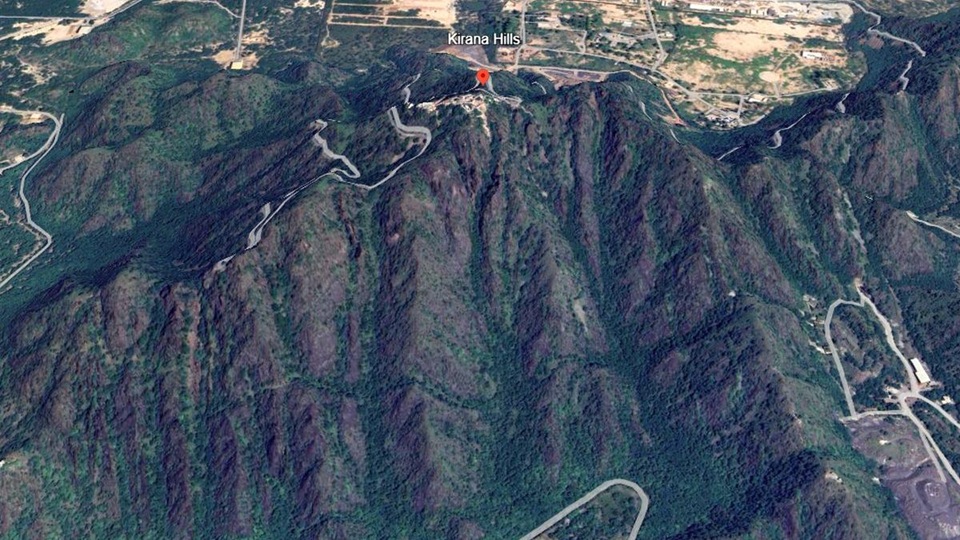In a dramatic escalation of regional tensions, reports have emerged of a potential radiation leak in Pakistan's Kirana Hills region following an alleged Indian airstrike. This incident, if confirmed, marks a grave new chapter in South Asia’s volatile geopolitical landscape—one that could have dire consequences for both nations and the broader international community.
The Kirana Hills: A Strategic Nuclear Facility
Located in Pakistan’s Punjab province near the city of Sargodha, Kirana Hills is known for its historical and strategic significance. Since the 1980s, it has been widely believed to host underground nuclear research and weapons testing facilities, although the Pakistani government has never publicly acknowledged the full extent of its use.
Satellite imagery and international intelligence assessments have long speculated that Kirana Hills served as an early site for subcritical nuclear experiments, weapons assembly, and storage facilities. Its proximity to the Central Ammunition Depot and other military installations further supports the theory that this site is a backbone of Pakistan’s nuclear defense infrastructure.
Alleged Indian Attack: A Preemptive Strike?
On the night of May 12, 2025, multiple unverified reports began circulating on social media and regional news outlets regarding explosions near the Kirana Hills. Within hours, anonymous military sources in Islamabad suggested that India had conducted a preemptive airstrike targeting the suspected nuclear facilities—allegedly in response to intelligence suggesting Pakistan was mobilizing tactical nuclear assets near the Line of Control (LoC).
India has not officially commented on these allegations, and no footage or satellite confirmation has been provided by independent verification agencies. However, given the fragile and secretive nature of nuclear deterrence in South Asia, any kinetic action targeting nuclear sites constitutes an extraordinary and dangerous breach of military norms.
Radiation Leaks: What We Know So Far
In the immediate aftermath of the explosions, local residents in the surrounding districts of Sargodha reported strange symptoms—nausea, skin irritation, and vomiting—prompting speculation about radiation exposure. By the morning of May 13, health workers in the region were spotted wearing hazmat suits, and several nearby villages were reportedly evacuated without explanation.
Leaked documents circulating online claim that Pakistan’s Atomic Energy Commission detected elevated gamma radiation levels, which suggests a breach in nuclear material containment. One source cited readings more than 10 times above safe thresholds in localized zones around the Kirana complex.
Eyewitnesses have described a metallic odor and increased military presence, including specialized NBC (nuclear-biological-chemical) units, as well as mobile decontamination teams.
International Response and Diplomatic Fallout
The international community has expressed deep concern over these reports. The United Nations Security Council convened an emergency session on May 14, calling for an immediate ceasefire and independent investigation into the attack and its aftermath.
The International Atomic Energy Agency (IAEA) issued a statement requesting access to the site to assess the scale of any radioactive contamination and ensure nuclear materials have not been compromised or dispersed. The IAEA has stressed the need for regional transparency to avoid misinformation and panic.
The United States and China, both key players in the region, have called for restraint. A joint communique urged India and Pakistan to avoid further military escalation and to prioritize communication through diplomatic and backchannel means.
Environmental and Humanitarian Concerns
Beyond the geopolitical ramifications, the potential environmental impact of a radiation leak in the Kirana Hills is catastrophic. The surrounding area is home to thousands of residents, fertile farmland, and critical water sources that could be irreparably harmed by radioactive contamination.
Radiation leaks from damaged nuclear facilities can have long-term consequences, including:
Contamination of groundwater and soil
Increased cancer rates among exposed populations
Forced displacement due to uninhabitable land
Mutations in flora and fauna
Pakistan’s Ministry of Health has reportedly activated emergency protocols for radiation exposure, including potassium iodide distribution and long-term medical monitoring of affected civilians. However, many fear that rural communities with limited infrastructure may suffer the worst without adequate government response.
A Dangerous Precedent
If this attack is confirmed, it would mark one of the first instances of direct military action on nuclear infrastructure in South Asia. It represents a dramatic escalation far beyond traditional skirmishes along the LoC and into territory that threatens to destabilize not just bilateral relations but global nuclear stability.
While both India and Pakistan have long maintained nuclear doctrines rooted in deterrence, a strike on a nuclear facility—even if preemptive—breaks unspoken boundaries and raises the risk of miscalculation. It also sets a worrying precedent for other nuclear states and flashpoints around the world.
Final Thoughts
As of now, much remains uncertain. The fog of war, deliberate misinformation, and the secretive nature of nuclear command structures make it difficult to confirm the full extent of the situation. What is clear, however, is that the alleged strike on Kirana Hills has the potential to spiral into a full-blown nuclear crisis if not addressed swiftly and transparently.
The world must watch closely—and act decisively—to prevent further escalation, mitigate the environmental damage, and bring all parties to the table for renewed dialogue.
